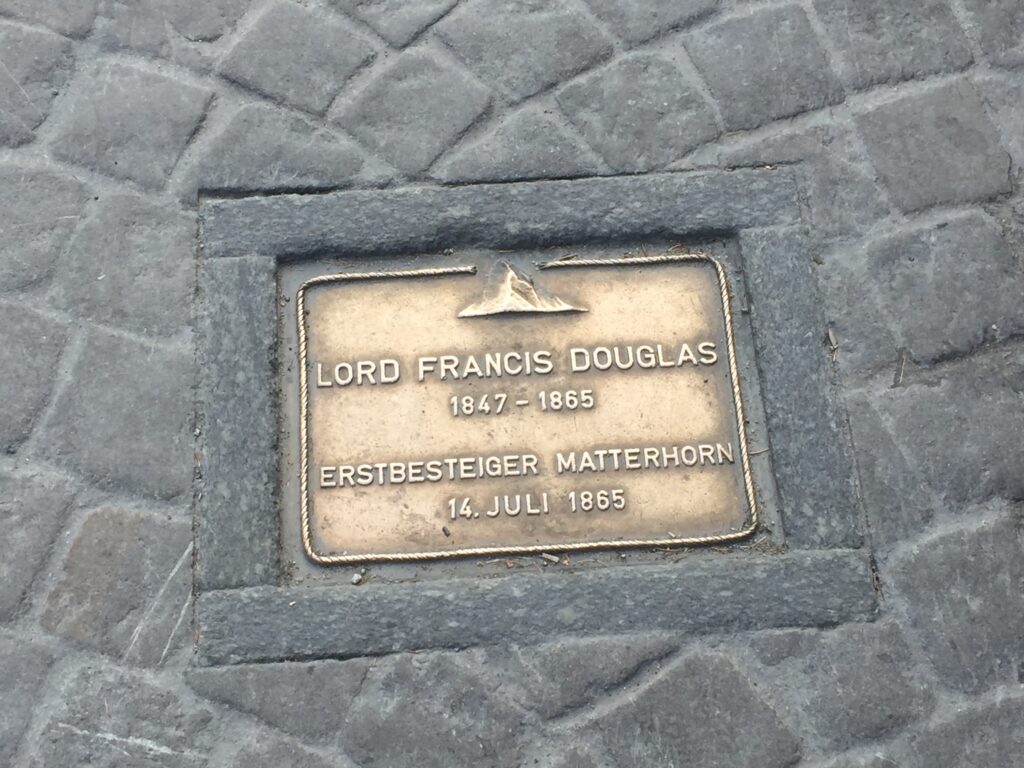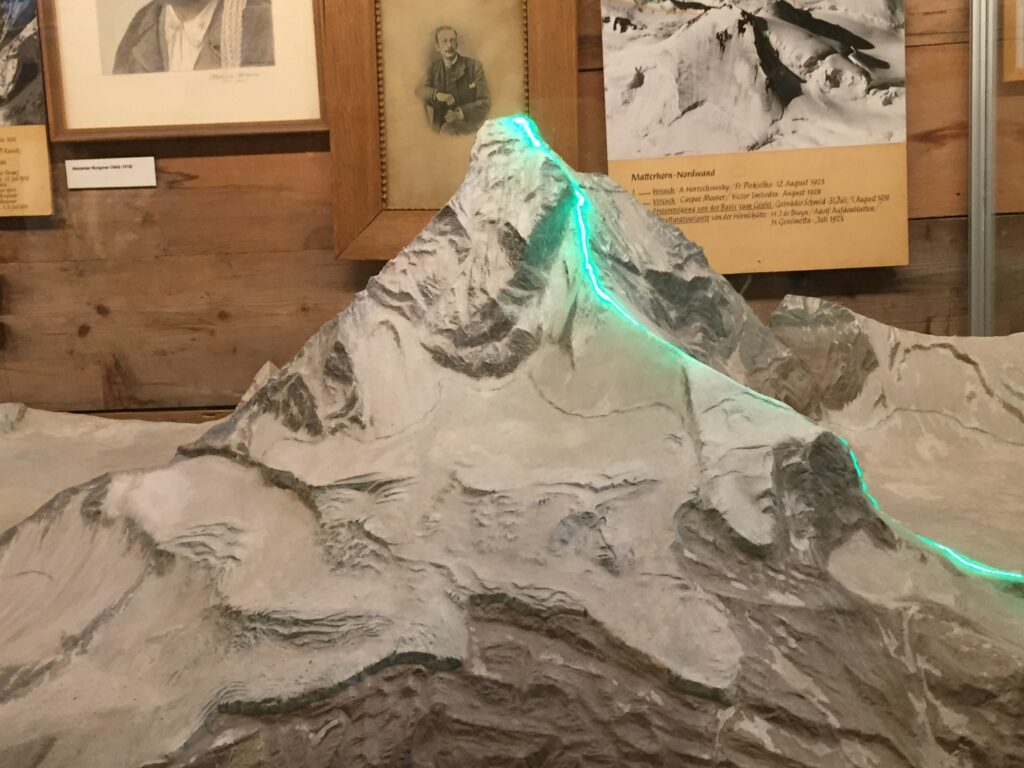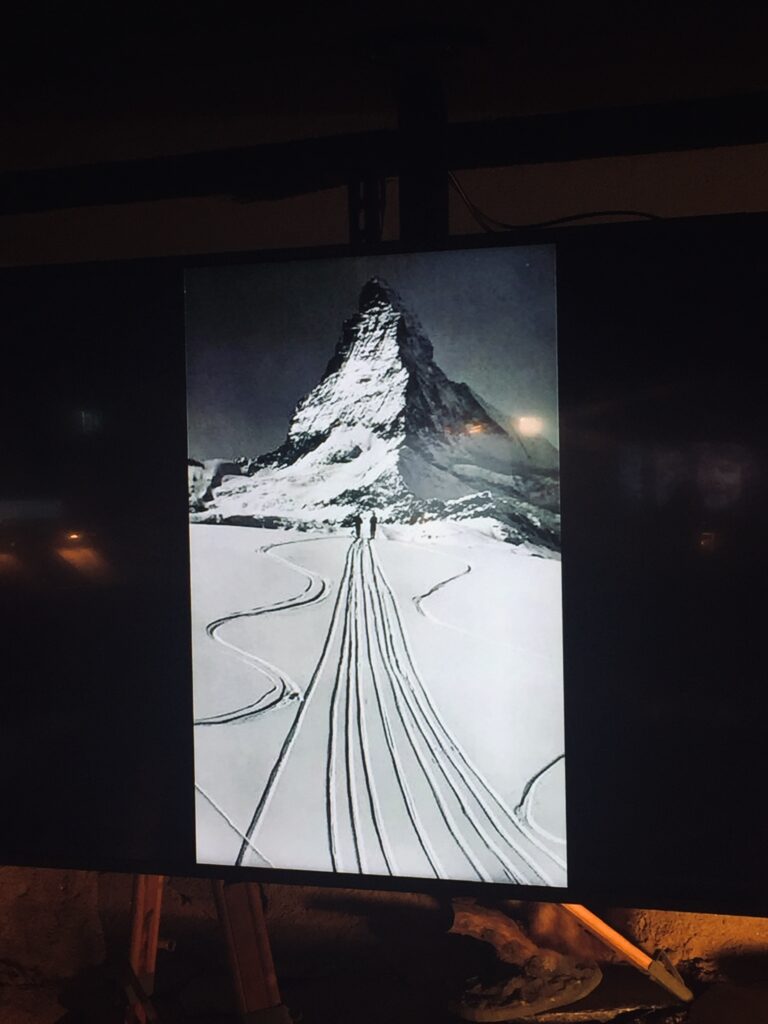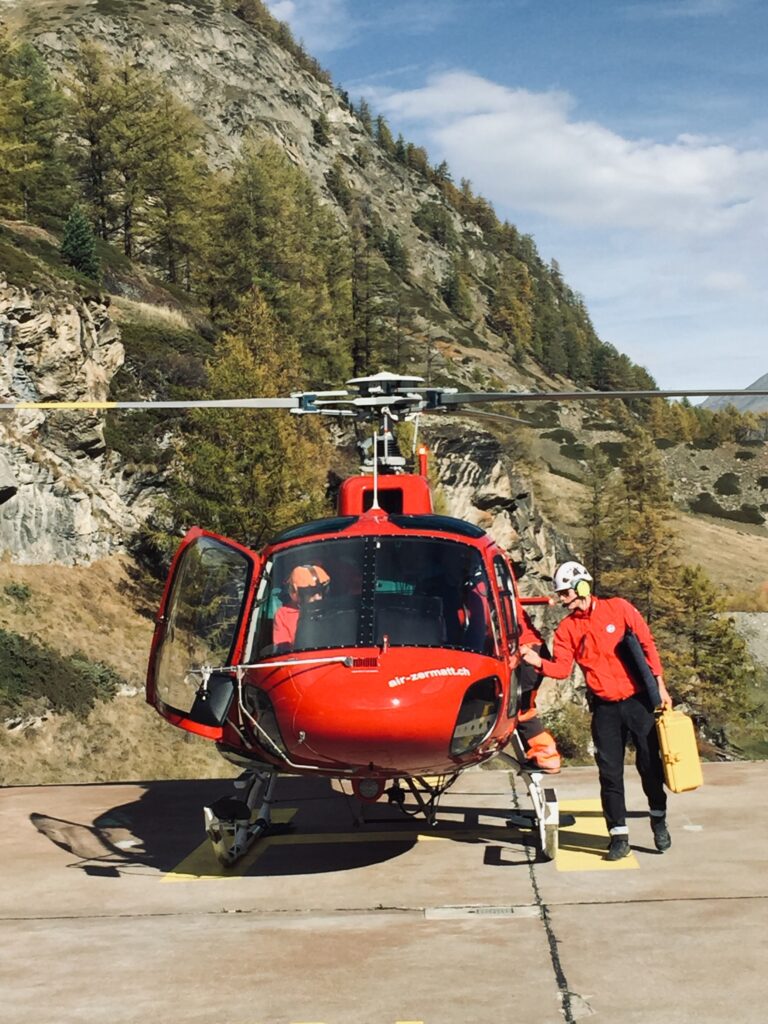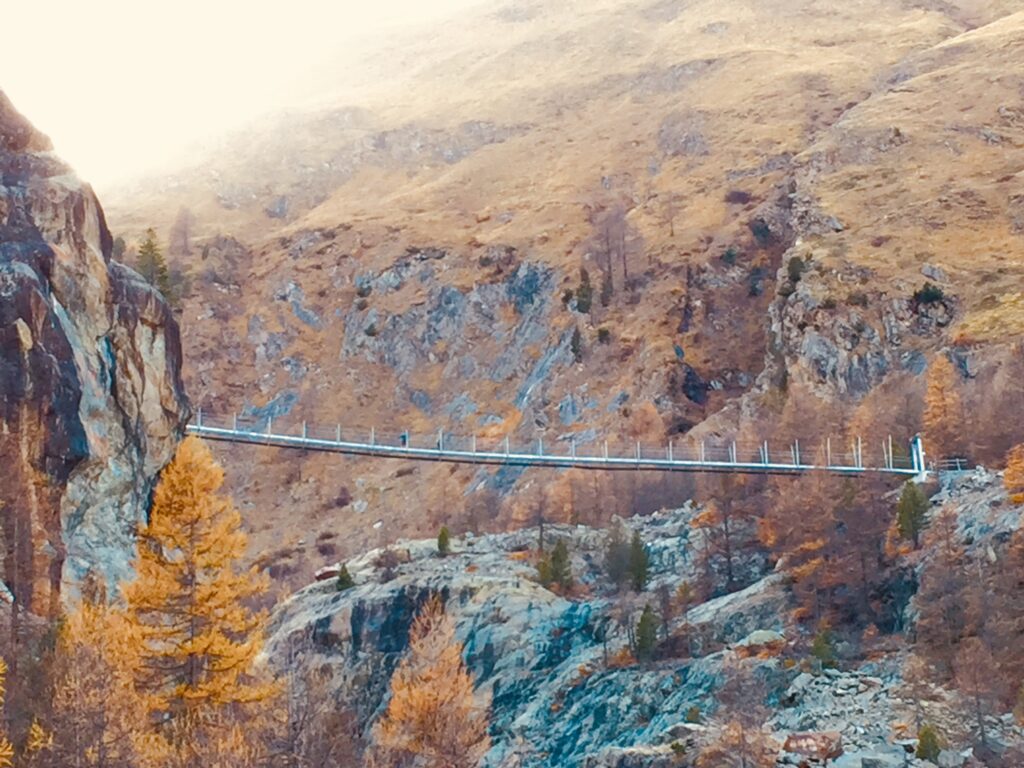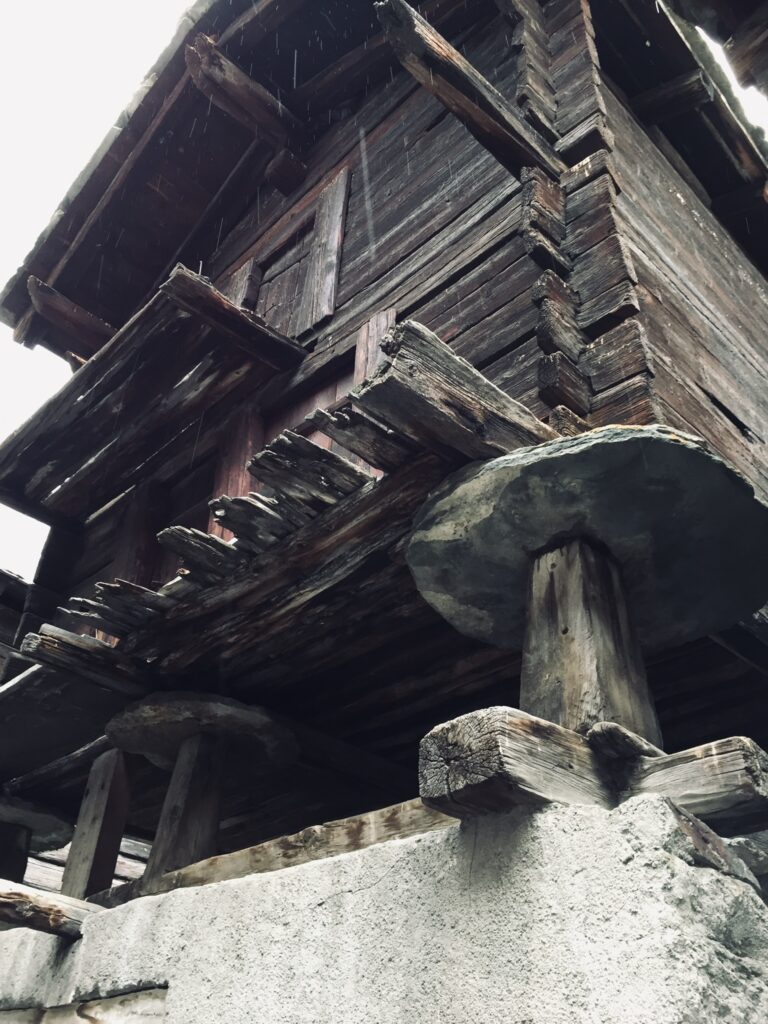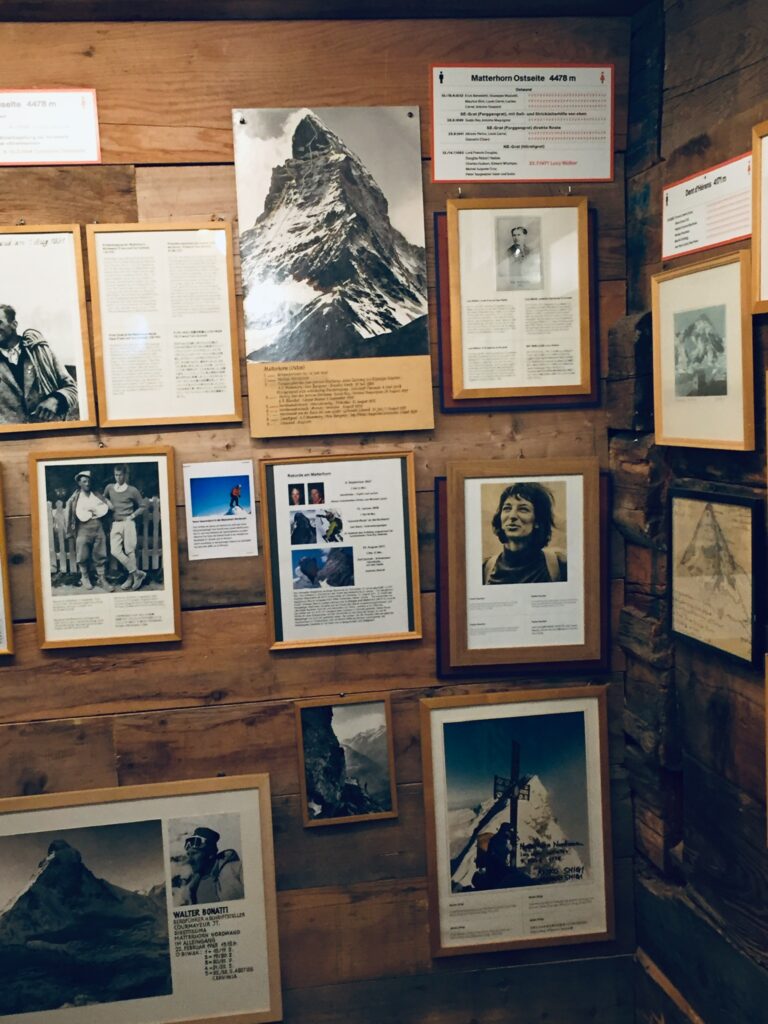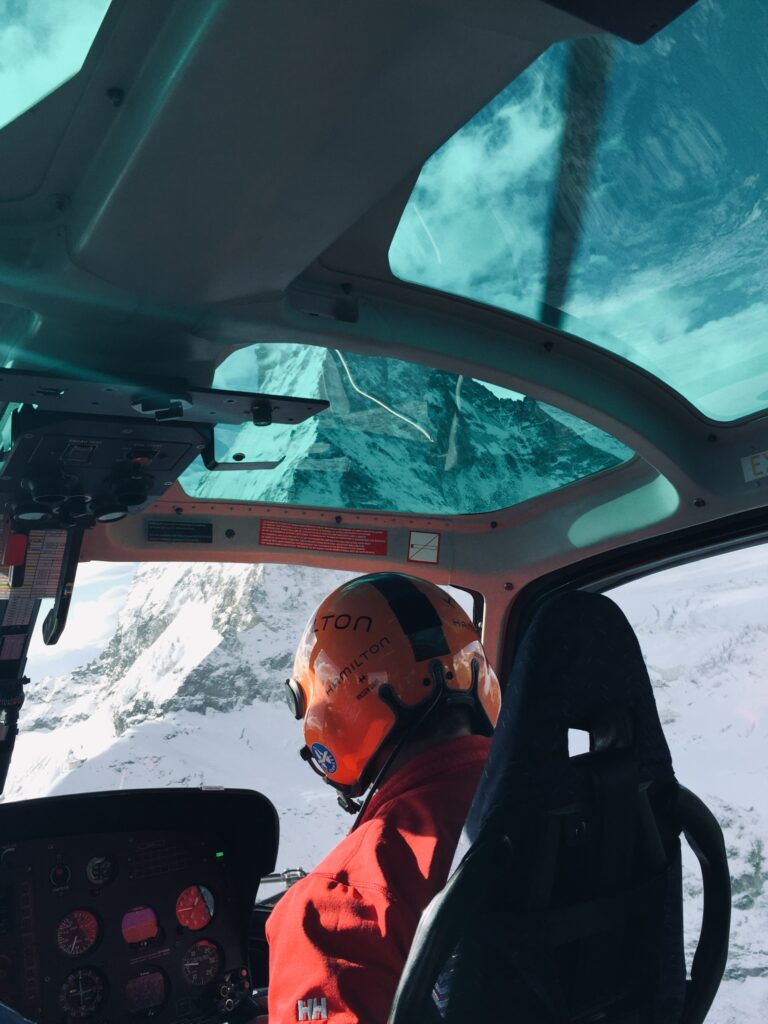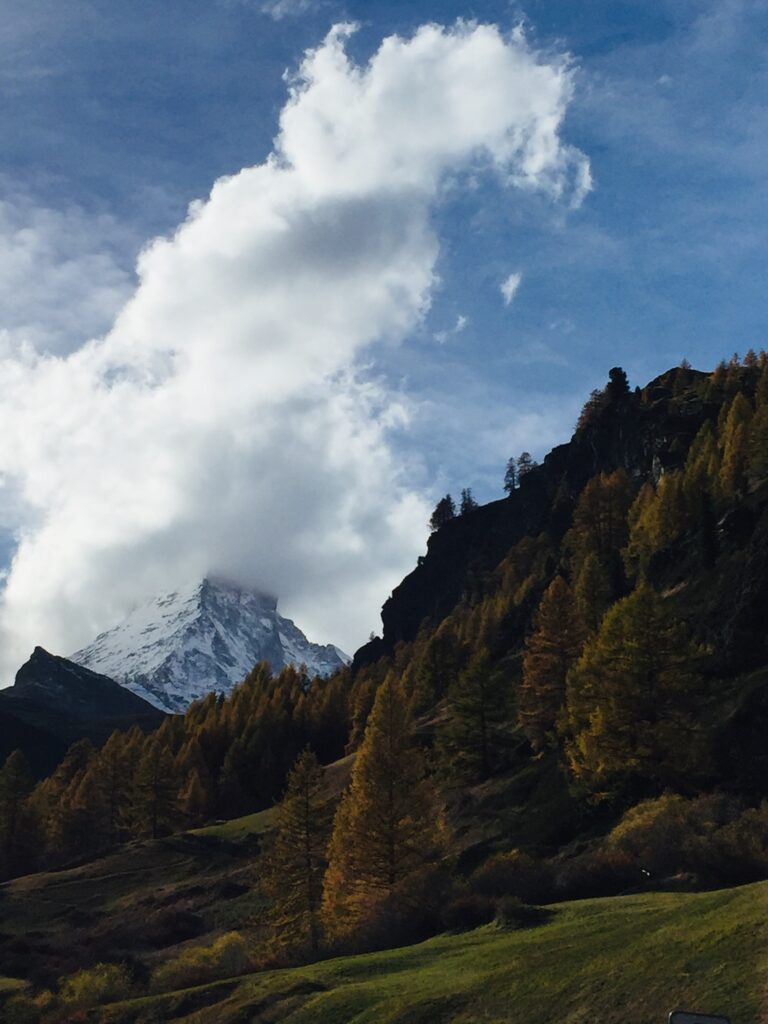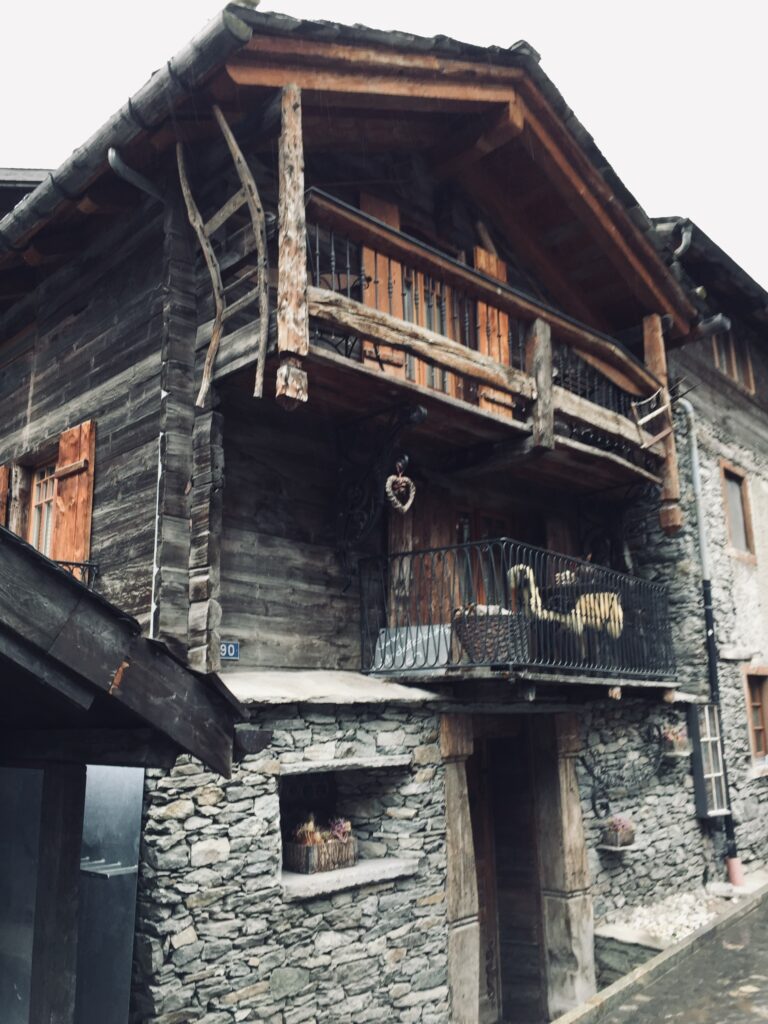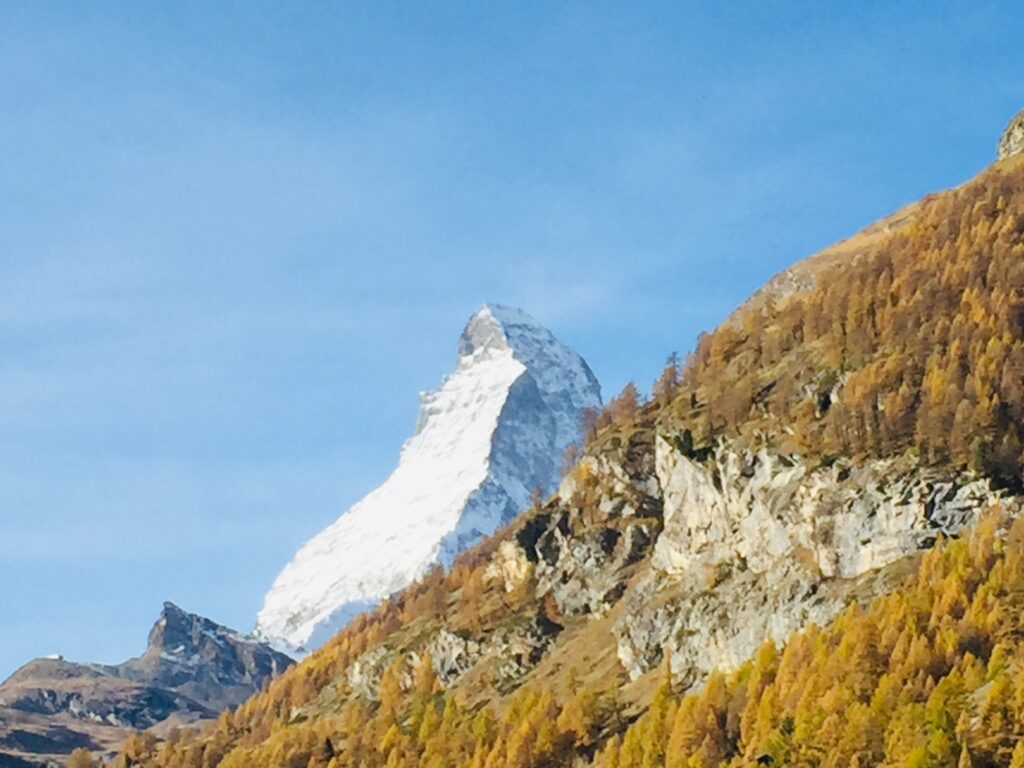The Matterhorn in the Valais Alps – probably the best known and most beautiful mountain in the world – is the matchpoint of many mountaineers. The first unsuccessful attempts to climb the Matterhorn were made as early as 1857. In 1862, John Tyndall, with guides Anton Walter, Johann Josef Benet, Jean-Jacques and Jean-Antoine Carrel, scaled the Southwest Shoulder, today’s Pic Tyndall, for the first time. Continuing the ascent along the Liongrat seemed impossible to them. The Liongrat still seemed too difficult to the Englishman Edward Whymper. He therefore tried to persuade his friend Jean-Antoine Carrel to climb from the Zermatt side. Carrel insisted on ascending from Italy.

In July 1865 Edward Whymper was informed by an innkeeper in Breuil-Cervinia that Carrel – without notifying Whymper – had set out again for the Liongrat. Feeling deceived, Whymper rushed to Zermatt to assemble a group for an immediate attempt across the Hörnligrat. On July 14, 1865, the 7-man team Whympers made the first ascent over the Hörnligrat.
Edward Whymper was the first to reach the summit because he cut his rope before the summit and ran ahead. He was followed by mountain guide Michel Croz (from Chamonix), Lord Francis Douglas, Reverend Charles Hudson, D. Robert Hadow (all from England) and Zermatt mountain guides Peter Taugwalder father and Peter Taugwalder son. Carrel and his party spotted them far below at Pic Tyndall. During the descent of the first climbers, the first four of the rope team (Croz, Hadow, Hudson and Douglas) fell fatally above the so-called „shoulder“ over the north face. On Saturday, July 15, 1865, on Sunday, July 16, 1865, and in the days that followed, Josef Marie Lochmatter set out with the rescue teams to provide first aid to the victims of the first ascent. A rescue team was able to recover three of the dead on July 19 on the Matterhorn glacier. Lord Francis Douglas‘ body was never found.
On July 17, Carrel, together with Jean-Baptiste Bich and Amé Gorret, also managed to climb the Liongrat to the summit.

